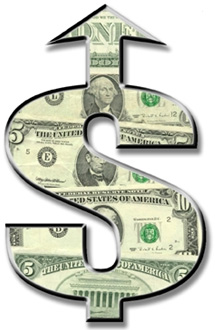According to Aon Hewitt's survey of more than 1,300 U.S. companies, base pay increases for salaried exempt workers were 2.8 percent in 2012, up marginally from 2.7 percent in 2011. Salaries have inched upwards year-over-year since 2009 when pay increases reached an all-time low of 1.8 percent.
Pay increases are expected to rise slightly in 2013. For executives, salaried exempt and salaried nonexempt workers, Aon Hewitt projects base pay increases of 3.0 percent in 2013.
"It is unlikely that salary increases will reach pre-recession levels of 4 .0 percent or higher any time soon," said Ken Abosch, compensation marketing, strategy and development leader at Aon Hewitt. "Companies are more impacted by the global economy than ever before, as a result organizations continue to be conservative with their spending, but we anticipate that attitude will remain even after the economy rights itself—holding down spending on base pay is the new normal."
Performance-Based Awards
According to Aon Hewitt's report, employers continue to offer variable pay, or performance-based awards that must be re-earned each year, as a primary way to drive performance and increase engagement while minimizing their fixed costs. In 2012, 90 percent of companies offered at least one variable pay program, in line with 2011.
Overall spending on variable pay as a percentage of payroll continues to rise steadily for salaried exempt workers. In 2012, companies spent 12.0 percent on variable pay, compared to 11.6 percent in 2011. Spending is expected to rise slightly to 12.1 percent in 2013.
Nonunion hourly workers saw the biggest jump in variable pay in 2012. As a percentage of payroll, employers spent 6.0 percent on variable pay rewards for nonunion hourly workers in 2012, compared to 5.2 percent in 2011. However, spending is expected to fall slightly to 5.6 percent in 2013 for this group.
"Organizations are being more strategic with the limited compensation dollars they have to spend," explained Abosch. "They are spending less on base pay increases for all workers, and instead, are rewarding high performing workers with larger performance-based awards. This allows them to better control spending, while still providing incentives for their best employees."
Salary Increases by City
According to Aon Hewitt's survey, workers in some U.S. cities can expect to see salary increases higher than the national average in 2013. These cities include Denver (3.6 percent); Austin, Dallas/Fort Worth, Detroit and San Diego (3.4 percent); and Houston and Kansas City (3.3 percent). Cities that can expect lower-than-average increases in 2013 include San Francisco (2.7 percent), Chicago and Minneapolis/St. Paul (2.8 percent).
Salary Increases by Industry
The industries that can expect to see the highest salary increases in 2013 include mining/milling (3.8 percent); computers/related products and energy (3.6 percent); and automotive/vehicle manufacturing (3.3 percent). The lowest increases are projected to be in education (2.5 percent), rubber/plastic/glass, government and health care/medical services (2.6 percent).













 A new survey by Aon Hewitt, the global human resources solutions business of Aon plc, reveals that salaries for U.S. workers continue to rise incrementally as concerns remain about the stability of the global economy. However, workers have the potential to offset low base pay increases through performance-based awards.
A new survey by Aon Hewitt, the global human resources solutions business of Aon plc, reveals that salaries for U.S. workers continue to rise incrementally as concerns remain about the stability of the global economy. However, workers have the potential to offset low base pay increases through performance-based awards.